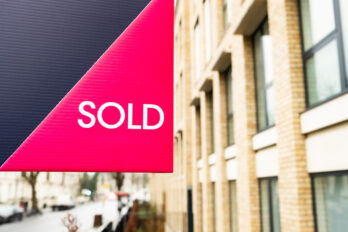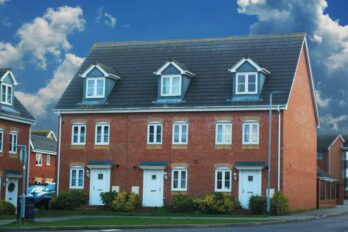
Staircasing Your Shared Ownership
Shared ownership can be a great route to homeownership if you’re unable to buy on the open market, especially in pricey markets such as London.
With shared ownership, you buy a share of a property with a mortgage. You then pay a below market value rent to your housing association on the portion you don’t own. This means you won’t need to save as much for a deposit, and you’ll have more manageable mortgage and rent payments. As you settle into life in your new home, however, you may decide that you’d like to buy a greater share in your home, a process known as staircasing. But how do you do this, how much you should pay, and how do you actually pay for it?
Pros and cons of shared ownership
Firstly, let’s look at the advantages and potential drawbacks when it comes to shared ownership. As mentioned, the biggest benefit is that it can provide a route to homeownership that wouldn’t be there if the only option was to buy 100% of a property. Shared ownership makes it more likely that you’ll be able to get a mortgage as you’ll only need to borrow a smaller amount, and your monthly repayments, including rent, can even work out cheaper than if you had an outright mortgage. You do, however, have the long-term security of tenure that you don’t necessarily have while renting.
So far, so good, but as with most things, it’s important to be aware of the potential downsides too. For example, you may find it harder to find a lender that offers mortgages for shared ownership. You will also need to factor in ground rent and service charges to your outgoings – be aware that you pay 100% of these no matter how much of the property you own. Properties will also be sold leasehold only, and the lease terms may limit the work you’re able to do on your home.
How to staircase your property
When you first purchase your shared ownership property you’ll likely buy between 25% and 75% of it, but once you’ve lived there for a certain period of time – usually one to two years, depending on the terms of your lease – you can purchase further shares in your home. This can be done at any time, although you can only make purchases in blocks of 10% or more, and this can only be done three times. There will be valuation and legal fees to pay each time you go through this process; it can be wise to buy the largest possible share in one go.
There are two types of staircasing; interim staircasing is where you purchase an additional share but not 100% of the property. In order to achieve this, you’ll need to contact your housing association and give notice that you intend to staircase. Your housing association will then either appoint a surveyor to carry out a valuation or give you a list of approved surveyors you can use. The price payable for the share will be based on this. You’ll receive a copy of the valuation and be asked to confirm that you want to proceed. Your valuation report will be valid for three months.
The second form of staircasing is final staircasing, which refers to the process of buying those last shares that will take you to 100% ownership. Again, the price payable will be based on the property’s current market value as assessed by a valuer. Once you have reached this milestone, you’ll no longer be in shared ownership, although you may still have to pay service charge and ground rent. Again, your lease will clarify this.
How much does staircasing cost?
In addition to paying for the actual share in the property, there are several other costs that you should factor in. You’ll need to pay for the valuation and your legal fees; you may also have to pay stamp duty, and your housing association may charge an admin fee.
There are a few options when it comes to paying for the additional share. If you have enough in savings, this would be the simplest option. If not, you’ll need to secure a mortgage. This could be through your current lender or by remortgaging with a new provider. In this case, you should also factor in any mortgage fees when putting together your budget.
Benefits of staircasing
While the costs around staircasing need to be carefully considered, buying a bigger share of your home does bring several benefits, particularly once you reach the holy grail of 100% ownership. At this point, you’ll have more choice when it comes to mortgages as you’ll no longer have to have a shared ownership mortgage. You’ll also benefit from the security that comes from owning your home rather than being classed as a tenant. Once you own your property, you’re also free to sell it on the open market – although you may have to offer it back to the housing association first if stated in your lease. Either way, as you staircase, you’ll benefit from any increase in property prices, and you’ll also have to pay less rent with each step you take towards full ownership.
The Novello approach
There’s clearly a lot to think about when it comes to staircasing but central to any decision to invest further will be the valuation, so you must get an impartial, accurate equity valuation report.
By choosing Novello to carry out your valuation, you’ll not only get a RICS registered valuer who’ll provide you with your home’s current market value, you’ll also get an expert advisor who can help to guide you through the process and make sure you get a fair deal. With our reports, you can better manage your finances and secure fair terms for your purchase and potentially save time and money.
Be aware that some housing associations require you to use their own approved valuers – so make sure you check first! We can often apply to be approved by them if we are not already.
To find out more, contact us today or get an Quotation.

